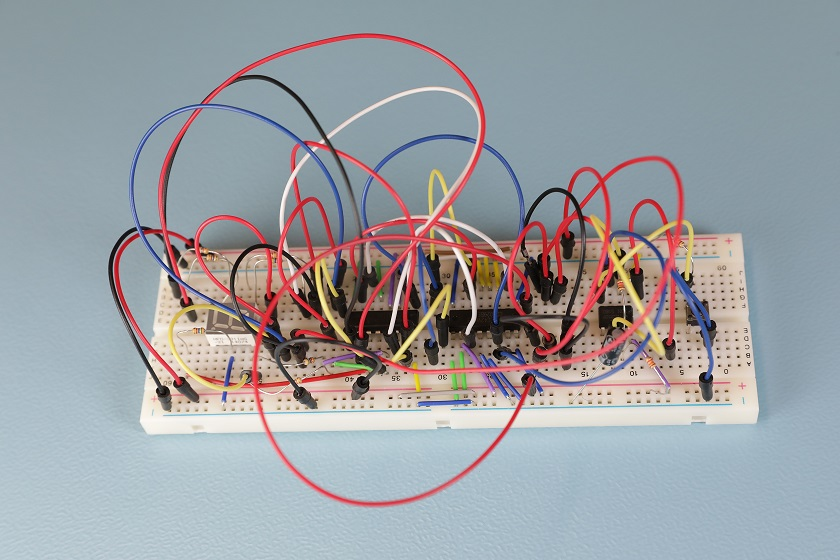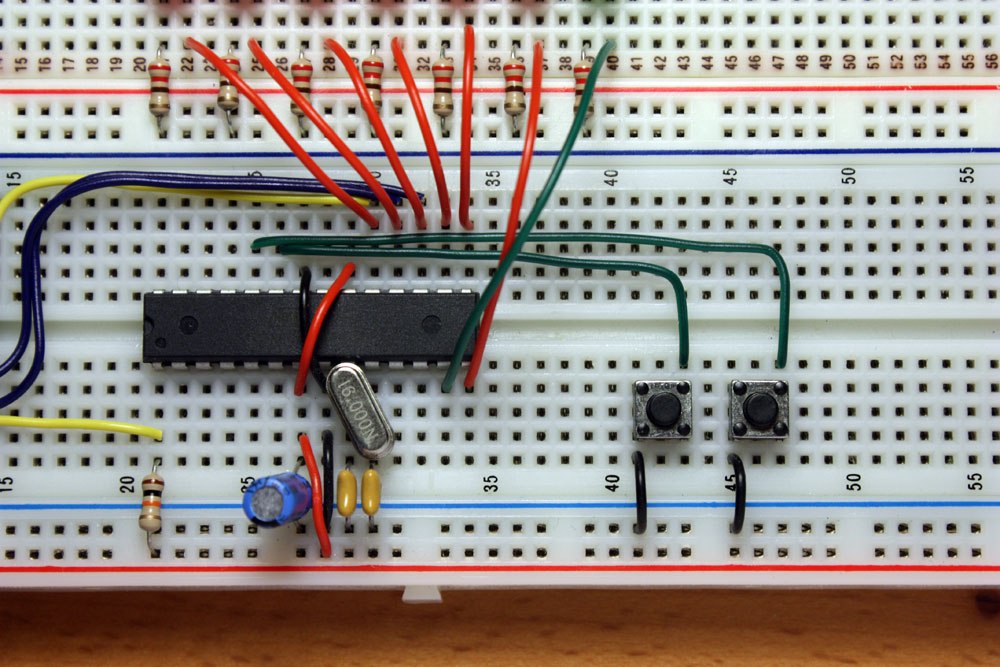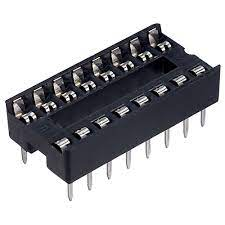Electronics Fabrication Tips, Tools and Resources
Here at the CCI, only a few courses require students to go beyond breadboard prototyping of circuits, and in lots of cases this can be all you need to develop your prototypes. However, for students that are interested in developing their hardware work, either to make permanent installations, to make work for others, to make wearables, or just to have more reliable circuits, there are a lot of useful tips and tricks that can make your life a lot easier!
These notes were written by Agnes for a Technical Skills Workshop. This guide is written in order of the stage of prototyping -- normally to make a new circuit I'd go through all of these!
0. General fabrication tips
- make lots of tests before soldering everything together! do things a small bit at a time
- always check for shorts before you plug stuff in
- it's a good idea to breadboard your ideas and get them working before doing anything else
1. Better Breadboarding
Often, the first step when prototyping is to work out the circuit on a breadboard. One of the first things I'd recommend doing is to use solid-core wire rather than header wire on the breadboard -- it makes it a lot easier to see what's going on.
General Rules:
- always use the power rails -- use red for the positive voltage, black for ground
- always connect all the grounds in your circuit together
- use solid core wire rather than headers to connect components together -- you can mould this onto the board, and it makes it much easier to see what's going on
bad: spaghetti
good: some kind of other much more legible pasta shape
To correctly arrange solid core wire, the easiest way is often to strip one end
Breadboarding Guides and Resources
2. Stripboard
For one-off prototypes, with smaller and not so complex boards (+ where it doesn't matter so much how large the board is), the stripboard/protoboard stage can often be a good place to stop. It holds all the components in place, and, so long as you pick the right connectors, it shouldn't break.
ChoosingStripboard Guides and Resources
- The Lost Art of Stripboard Prototyping -- this is a fantastic guide, really worth giving it a read
- How to Solder: A Complete Beginner's Guide
Wire gauge and Power Considerations
With circuits that need to handle either movement or higher loads, what wire you use can become a major consideration. Adafruit have a great guide to understanding wire gague and picking the correct wire for your project.
Connectors
One of the major decisions that you will make in any electronics project is what connectors to use -- for example, to connect different boards together, to connect
Main types
- JST
- IDC
- DuPont
- Screw Terminal
- USB
A note on language -- lots and lots of electronics manufacturers will still use the gendered terms 'male' and 'female' to describe the orientation of connectors. This is language that's essentialist and reductive, and at the CCI we often use 'plug' and 'socket' as a substitute -- but if you are searching for connector types online it can be useful to have these as search terms as they're still used a lot.
IC sockets
Never solder an integrated circuit directly into a proto board!!! You'll end up with loads of issues later on. Instead, solder an IC socket in -- this way if you have issues with your IC (like, you accidentally blow it up), it's really straightforward to change it out without having to desolder a load of pins.
It's a good idea to put all your ICs in the same orientation -- this makes it a lot harder to put one in the wrong way round (incidentally a great way to blow things up).
Prototyping for Wearables
Wearable electronics comes with a bunch of considerations about size and power management.
I want to make my circuit smaller
This is a pretty classic issue with arduino-based circuits -- you have a circuit that works, maybe built with Arduino, and you want to minaturise it. Here are some options, from biggest to smallest:
- use an Arduino shield -- this is a special prototyping board that allows you build directly on top of the Arduino. This can be nice if you just want to avoid connection spaghetti
- use a smaller arduino board, like an Arduino Nano or Arduino Micro. These can be integrated directly into a proto board / breadboard
- Replace the arduino with another ATMEL chip -- these can still be programmed like arduinos, but it's possible to make the board containing them a lot smaller and only contain the parts you need. As these don't have the USB interface, you will need to use a separate board to program them -- luckily, an Arduino can actually be used for this! There's a good guide to doing this here
I want my circuit to be wireless
This is another really common thing to want to do. Core options:
- radio
- bluetooth
- wifi -- technically this is radio but it's it's own protocol.
I want my circuit to be soft/flexible
- Silione covered strand-core wire
- Conductive thread
- Conductive ribbon
Adding connections to this can be tricky.
3. PCB Fabrication and Milling
The next step up from prototyping on stripboard is to fabricate your own boards. There's a few different ways to do this, and typically this might be a choice you would make if:
- you want to make something in volume (depends on complexity, but this can save you a lot of time even with low volumes)
- you want to make something much smaller (e.g. for wearables)
- you want something to look nicer than proto board
this step for wearables / volume
PCB design
Software:
- Eagle -- this has historically been the standard for PCB prototyping, it's been integrated into Autodesk's Fusion360 software. It's possible to get a license as a UAL student if you want to use this, but increasingly KiCad is just as good, free and has most of the same features.
- KiCad -- free and open-source PCB prototyping software. This is getting better all the time and if you're getting started I'd recommend learning this over Eagle
- KiCad Tutorial
PCB Fabrication Services
We recommend a number of different PCB Fabrication services here on the wiki (scroll down to 'PCB production').
SMT
Flexible Electronics
Other Considerations
I want my circuit to work outdoors
Talk to lieven
My circuit contains rotating parts
ughhhh don't do that



